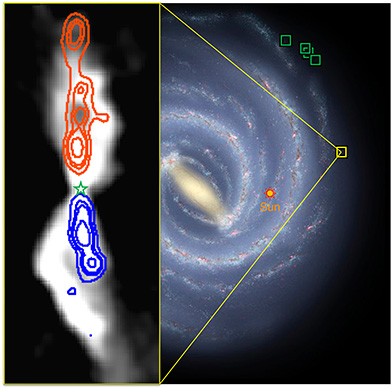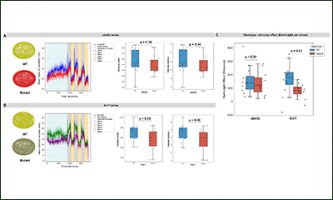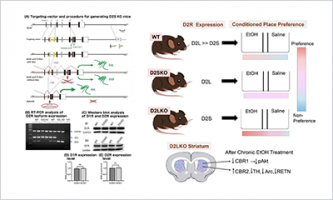Protostellar Jet Detection in Milky Way’s Outer Region Reveals Universal Star Formation
Sep 05 2025
Protostellar jets were detected for the first time using ALMA in the Milky Way’s outer region, showing that star formation works similarly in distant, low-metallicity regions, whereas the chemistry offers rare clues to early cosmic conditions
Astronomers have gained insights into star formation by capturing the first spatially resolved detection of protostellar outflows and jets in the Milky Way’s outer region. The discovery, made using the Atacama Large Millimeter/submillimeter Array (ALMA), revealed that although the fundamental physics of star formation remains the same across different galactic environments, different chemistry or dust composition is observed in the outer Galaxy source.
The research focused on the protostellar source Sh 2-283-1a SMM1, located about 7.9 kiloparsecs (26,000 light-years) from the Sun and 15.7 kiloparsecs (51,000 light-years) from the Galactic center. This outer-Galaxy region contains only about one-third of the heavy elements found near the Sun. Such low-metallicity environments resemble those of the early Milky Way, making the site a rare natural laboratory for understanding star formation process in primitive environments.
ALMA’s observations revealed a striking bipolar system: narrow jets of high-velocity gas streaming away from the protostar, surrounded by broader, slower-moving outflows. This study tracked gas moving toward and away Earth using blue and red contours, respectively. The surrounding outflow appeared in gray, and the protostar itself was marked with a green star. These captured images provided the first clear view of protostellar jets resolved at such a large galactocentric distance.
Analysis of the velocity structure revealed that the jets are episodic rather than continuous. Instead of a steady flow, the protostar undergoes bursts of mass ejection recurring every 900–4,000 years. This stop-and-start rhythm regulates star growth, allowing it to accrete material from its disk while expelling excess mass and angular momentum. Although episodic ejections have been observed in nearby star-forming regions, this study reported such activity in a source more than 15 kiloparsecs from the Galactic center for the first time.
“By resolving jets and outflows in a protostar so far out in the Galaxy, we can see that the same physics shaping stars near the Sun also operates in low-metallicity environments. This discovery unlocks a unique opportunity to fundamentally advance our understanding of how stars are born across diverse cosmic environments,” said lead author Toki Ikeda of Niigata University.
The chemistry of the jets reflects their unusual environment. Measurements of carbon monoxide (CO) and silicon monoxide (SiO) show that the N(SiO)/N(CO) ratio appears lower in the outer-Galaxy protostellar core than in comparable sources in the inner Galaxy. This suggests that shock chemistry or dust properties differ in the outer Galaxy, where heavy elements are scarce. The finding reinforces that the physics of star formation is universal, whereas the chemistry varies depending on the local conditions.
Further analysis classified Sh 2-283-1a SMM1 as a hot core, i.e., a compact, warm, and chemically rich region surrounding a forming star This marks only the second detection of a hot core in the outer Galaxy, highlighting the rarity of such chemically complex regions so far from the Galactic center. The team further estimates the luminosity of protostar at approximately 6,700 times that of the Sun, placing it in the intermediate-to-high–mass category.
“Finding such a clean jet structure in the outer Galaxy was unexpected,” said Takashi Shimonishi, a co-author from Niigata University. “Even more exciting, the protostar was found to harbor complex organic molecules, opening up new opportunities to study star formation in more primitive environments from both physical and chemical perspectives.”
Beyond Sh 2-283-1a SMM1, ALMA also detected molecular outflows from four additional protostars in the outer Galaxy, confirming that star formation in these remote regions is both active and widespread.
These findings have great implications for astrophysics. By resolving jets and outflows from a protostar in a low-metallicity environment, the study confirms that the blueprint for star formation holds across the Milky Way, regardless of chemical composition. Moreover, the distinct chemical signatures of the outflows offer a glimpse into various conditions that shaped the earliest generations of stars.
The breakthrough underscores ALMA’s ability to extend the frontier of star formation studies. Until now, resolved studies of protostellar molecular jets were limited to objects only a few thousand light-years away. By extending this capability to the outer Galaxy, astronomers can now test whether models developed in nearby star-forming regions apply throughout the Galaxy.
Looking ahead, the team plans to expand their survey to additional outer-Galaxy protostars. Broader surveys could reveal whether episodic ejection cycles vary with metallicity, and whether molecules like SiO behave differently across environments. These efforts will build a fuller picture of how stars and planetary systems emerge in the diverse chemical landscapes of the Milky Way.
By capturing the first resolved jets in Sh 2-283-1a SMM1, identifying their episodic nature, and confirming the source as a rare hot core, this study bridges today’s star formation with the processes that shaped the early Universe. It shows that while chemistry changes with environment, the physics of stellar birth is a constant, i.e., linking the Milky Way’s outskirts to the Universe’s ancient past.

Figure 1 : ALMA reveals protostellar jets and outflows in the Milky Way’s outer region [credit: Ikeda et al. (Niigata univ.), background: R. Hurt/NASA/JPL-Caltech/ESO]
Protostellar outflows and jets discovered in the outer Galaxy. The left panel shows CO line emission images obtained with ALMA observations. The red and blue contours represent high-velocity jet gas moving away from and toward us, respectively. The grayscale background indicates the distribution of lower-velocity outflow gas. The green star indicates the positions of the protostar. The yellow and green squares indicate the regions observed with ALMA in this study.
Publication Details
Journal: The Astrophysical Journal
Title:The detection of spatially resolved protostellar outflows and episodic jets in the outer Galaxy
Authors:Toki Ikeda, Takashi Shimonishi, Natsuko Izumi, Hiroyuki Kaneko, Satoko Takahashi, Kei Tanaka, Kenji Furuya, and Chikako Yasui
Doi: 10.3847/1538-4357/ade235
News release
The article was released in EurekAlert, the online publication of the American Association for the Advancement of Science.
More News
-
 Dec 23 2025 Research results
Dec 23 2025 Research resultsIdentification of a Factor Promoting the Formation of Pathogenic Tau Aggregates and Neuronal Survival in Alzheimer's Disease
-
 Dec 08 2025 Research results
Dec 08 2025 Research resultsBehavioral and molecular insights into anxiety in ube3a and fmr1 zebrafish models of autism spectrum disorders
-
 Nov 18 2025 Research results
Nov 18 2025 Research resultsDopamine D2S/D2L Receptor Regulation of Alcohol-Induced Reward and Signaling
